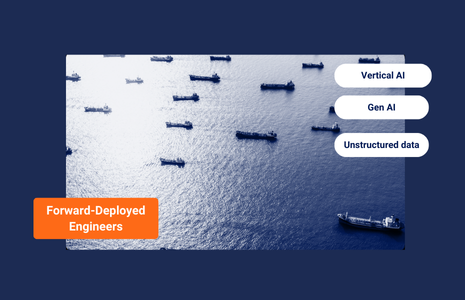Not all dark activities are created equal: Masterclass highlights

What’s inside?
How does the duration of dark activity impact risk? Should the location of the dark activity raise a red flag? These are some of the questions we tackle in our latest masterclass, Tanker Tricks and Deep Dark Activity.
Dror Salzman, a Product Manager at Windward, says that context is crucial in detecting new typologies and fine-tuning risk. Dror illustrates how his insights on maritime are used to train better, more accurate machine learning models. Ron Crean, VP Commercial, and Chloe Deacon, a Solution Expert Manager, discuss why this is crucial to meeting best practices and safely managing complex compliance requirements. Now more than ever, strong AI and maritime expertise are key to an effective risk management solution that can boost due diligence processes and stay ahead of evolving typologies.
The risk dilemma
Dark activity is the bread and butter of deceptive shipping practices. But it’s one of many evolving MOs that stakeholders need to stay ahead of. As typologies like identity tampering and GNSS manipulation become more commonplace, the need for AI is becoming clear. A Windward study reviewing the past four years concluded that 85% of active vessels revealed signs of deceptive shipping practices. Of these vessels, Windward gave on average 623 days advance notice prior to designation. Real-time insights that can inform stakeholders of what action to take are crucial to proactively managing risk. And only contextualized data can generate the right insights.
Take the example of flag hopping. A once standard deceptive shipping practice has now evolved into systematic flag manipulation – a more sophisticated effort employed by bad actors to conceal their location. The key here is that these cases are not single events but part of a deliberate method to avoid sanctions. So how do you establish a typology as systematic? With a dynamic and comprehensive approach to risk review, stakeholders can find patterns in the unpredictable and swiftly adapt.
This is key to distinguishing true risk events. For instance, when comparing two vessels that show instances of dark activity – do you investigate both? Do they pose the same risk? Without considering the duration of the dark activity, vessel class, identity, or geography, it becomes difficult to avoid false positives.
Deep dark activity and what led us there
In January 2021, the U.S hit the Fides Ship Management company with sanctions for trading Venezuelan crude oil, involving 4 of their vessels. Sanctioned vessels represent a small percentage of the true risk exposure across the global fleet. Our data reveals that there are 6,379 medium and high-risk vessels linked to 8,111 unique companies. Due to the high sanction evasion activity in Venezuela – we took a deep dive into our data to see what more could be revealed.
We leveraged behavioral analysis, anomaly detection, and reverse engineering to understand the most relevant risk factors. The first common denominator among these sanctioned vessels was the duration of the dark activity. Based on that, we set a parameter to search for crude oil tankers that conducted long periods of dark activity. Over 200 vessels fit this criterion – but risk is not black or white. By expanding our risk parameters to account for unique behavioral data and vessel criteria, we identified a group of tankers that all exhibited the same pattern to travel in and out of Venezuela. Spoiler: there are more than 4.
Sanctionable activity is bound to grow as bad actors learn new methods to go undetected. Dark activity as a simple practice will evolve into playing a role in more sophisticated practices. Machine learning tools that can keep up with the latest trends will be crucial to stay ahead of Venezuelan oil smuggling operations and new typologies that will continue to develop in other regions. Our secret sauce? Strong maritime expertise with AI models that bring this to scale. Tune in to the deep dark activity masterclass to learn more.










